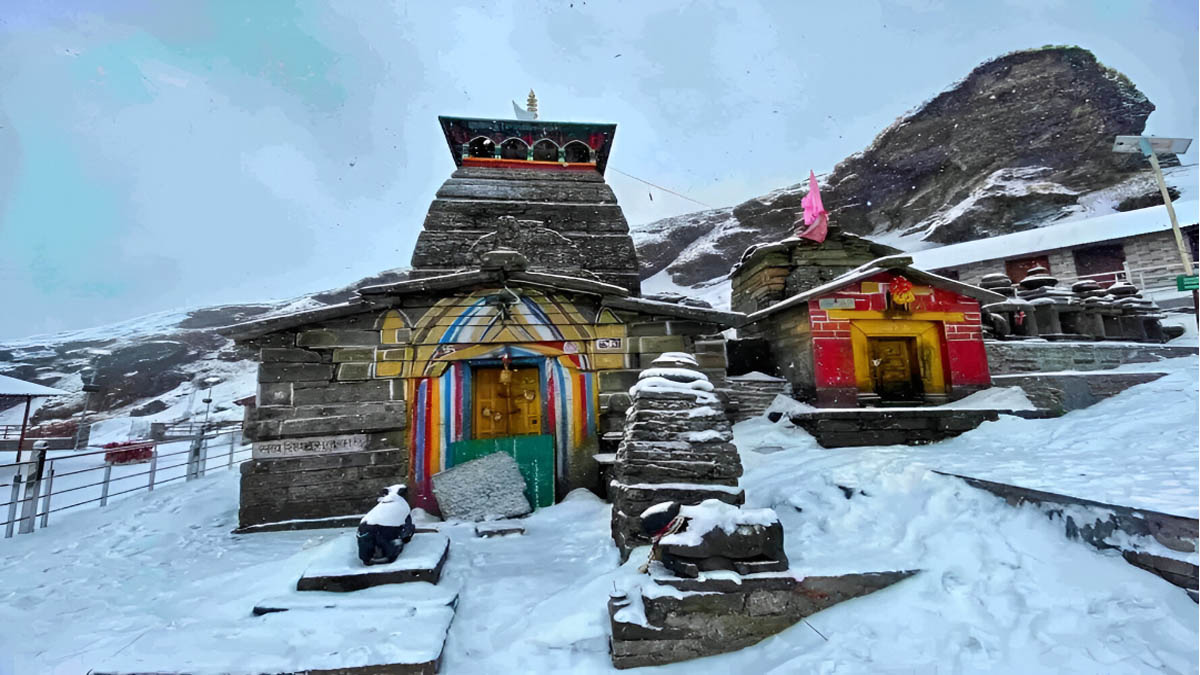Now Reading: Tungnath Temple: Abode of Lord Shiva Amidst Himalayan Majesty
-
01
Tungnath Temple: Abode of Lord Shiva Amidst Himalayan Majesty
Tungnath Temple: Abode of Lord Shiva Amidst Himalayan Majesty

Perched at an awe-inspiring altitude of 3,680 meters (12,073 feet) in the Rudraprayag district of Uttarakhand, India, stands the revered Tungnath Temple. This ancient shrine, dedicated to Lord Shiva, holds the distinction of being the highest Shiva temple in the world and is a significant part of the sacred Panch Kedar pilgrimage circuit. Its lofty location amidst the breathtaking Garhwal Himalayas not only imbues it with profound spiritual energy but also offers unparalleled panoramic vistas that captivate the hearts of pilgrims and trekkers alike.
A Tapestry of Legend and History:
The history of Tungnath Temple is deeply intertwined with Hindu mythology and the epic tale of the Mahabharata. Legend narrates that the Pandavas, the heroes of the epic, built this temple to atone for the sins of killing their kin during the Kurukshetra war. Lord Shiva, displeased with their actions, eluded them by transforming into a bull. While his various body parts manifested at the other Panch Kedar sites, his arms are believed to have appeared at Tungnath, where they are worshipped in the form of a stone idol.
While the exact age of the temple remains undocumented, its architectural style suggests it is over a thousand years old. Built in the traditional North Indian Nagara style, the temple’s modest yet captivating structure is crafted from stone and features a conical roof adorned with religious symbols. The sanctum sanctorum houses the sacred Shivlinga, and the temple complex includes smaller shrines dedicated to other deities, creating a powerful spiritual ambiance. It is believed that the revered sage Adi Shankaracharya visited and possibly played a role in the temple’s establishment or renovation.
Spiritual Significance and the Panch Kedar Yatra:
As the third temple in the Panch Kedar pilgrimage, Tungnath holds immense significance for devotees of Lord Shiva. The yatra, or pilgrimage, to the Panch Kedars, which also includes Kedarnath, Madhyamaheshwar, Rudranath, and Kalpeshwar, is considered a sacred journey to seek the blessings of Lord Shiva in his various manifestations. The challenging yet rewarding trek to Tungnath is undertaken by thousands of pilgrims annually, who brave the high altitudes and rugged terrain to experience the divine presence and the serene beauty of the Himalayas.
The Trek to Divinity:
The journey to Tungnath is an adventure in itself. The trek commences from the picturesque village of Chopta, often referred to as “Mini Switzerland” due to its stunning meadows and verdant landscapes. The approximately 3.5-kilometer uphill trek to the temple is a moderate climb, winding through lush green meadows, rhododendron forests, and offering breathtaking views of snow-capped peaks like Nanda Devi, Trishul, and Chaukhamba. The well-defined stone-paved path makes it accessible to most individuals with a reasonable level of fitness.
For those seeking even more spectacular views, a further 1.5-kilometer trek from Tungnath leads to the summit of Chandrashila Peak, meaning “Moon Rock.” From this vantage point, trekkers are rewarded with a 360-degree panorama of the majestic Himalayan range, particularly enchanting during sunrise and sunset.
Accessibility and Best Time to Visit:
Tungnath is accessible by road up to Chopta. From major towns and cities in Uttarakhand, such as Rishikesh, Dehradun, and Haridwar, one can hire taxis or take buses to reach Chopta. The nearest railway station is in Rishikesh, and the nearest airport is Jolly Grant Airport in Dehradun.
The ideal time to visit Tungnath is during the summer months (May to June) when the weather is pleasant and the skies are clear, offering unobstructed views of the mountains. The post-monsoon period (September to November) is another favorable time, with crisp air and golden hues painting the landscape. The temple remains closed during the winter months (November to April) due to heavy snowfall, making the region inaccessible.
A Call to Spiritual Seekers and Nature Lovers:
Tungnath Temple is more than just a religious site; it is a sanctuary of peace and natural beauty that draws spiritual seekers and adventure enthusiasts alike. The challenging trek, the breathtaking vistas, and the profound spiritual energy of the highest Shiva temple in the world create an unforgettable experience. A visit to Tungnath is a journey into the heart of the Himalayas, leaving an indelible mark on the soul.
Recent Developments:
In recent news, the Tungnath Temple has faced structural challenges due to water leakage and a weakening foundation, particularly exacerbated during the monsoon season. The temple committee and the Uttarakhand government are prioritizing repair work to ensure the safety and preservation of this ancient and revered shrine for future generations. Efforts are underway to assess the damage and implement necessary restoration measures.










